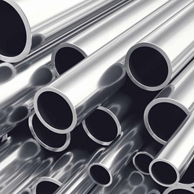
link esterni:
Steel
iron and carbon alloy
Steel is a ferrous alloy composed largely of iron and carbon, this in a percentage not exceeding 2.0%. With higher percentages, the properties of the material change and the name becomes cast iron.
Throughout history, steel has been used in many different ways, always indispensable to technological innovation throughout the world. Without its availability and low cost, the industrial revolution would not have existed.
Steel production techniques have always improved over time.
Steel is a fundamental material in the railway industry, both for the production of trains and rails, as well as in shipbuilding and aeronautical construction. In the automotive sector it remains by far the most used material, constituting on average between 50 and 70% of the weight of a car.
In 1967, the world produced 500 million tons of steel. In recent years this number has risen to over 1,800 million tonnes, obtained both from the integral cycle with the refining of the cast iron from the blast furnace and with the melting of ferrous scrap, and subsequently processed through various industrial production processes, such as rolling, extrusion, drawing, forging, heat treatment and molding.
To understand how much steel is used (according to The World Steel Association), 55% of a car's weight is due to steel parts.
There are many types of steel, over 3,500, each relating to different design and market needs with almost infinite possibilities of use.
The different types of steel and the different properties derive from the use of different alloys, which are divided into four main types:
Carbon steel with a matte appearance, known to be sensitive to corrosion.
Alloy steel, composed of a mixture of different metals, such as nickel, copper and aluminum.
Tool steel, used in various ways to best meet the particular manufacturing requirements of different tools.
Inox steel, or stainless steel, with a chromium content greater than about 12% imparts resistance to oxidation and corrosion. Finds culinary, medical and automotive applications, valued for many other uses.








